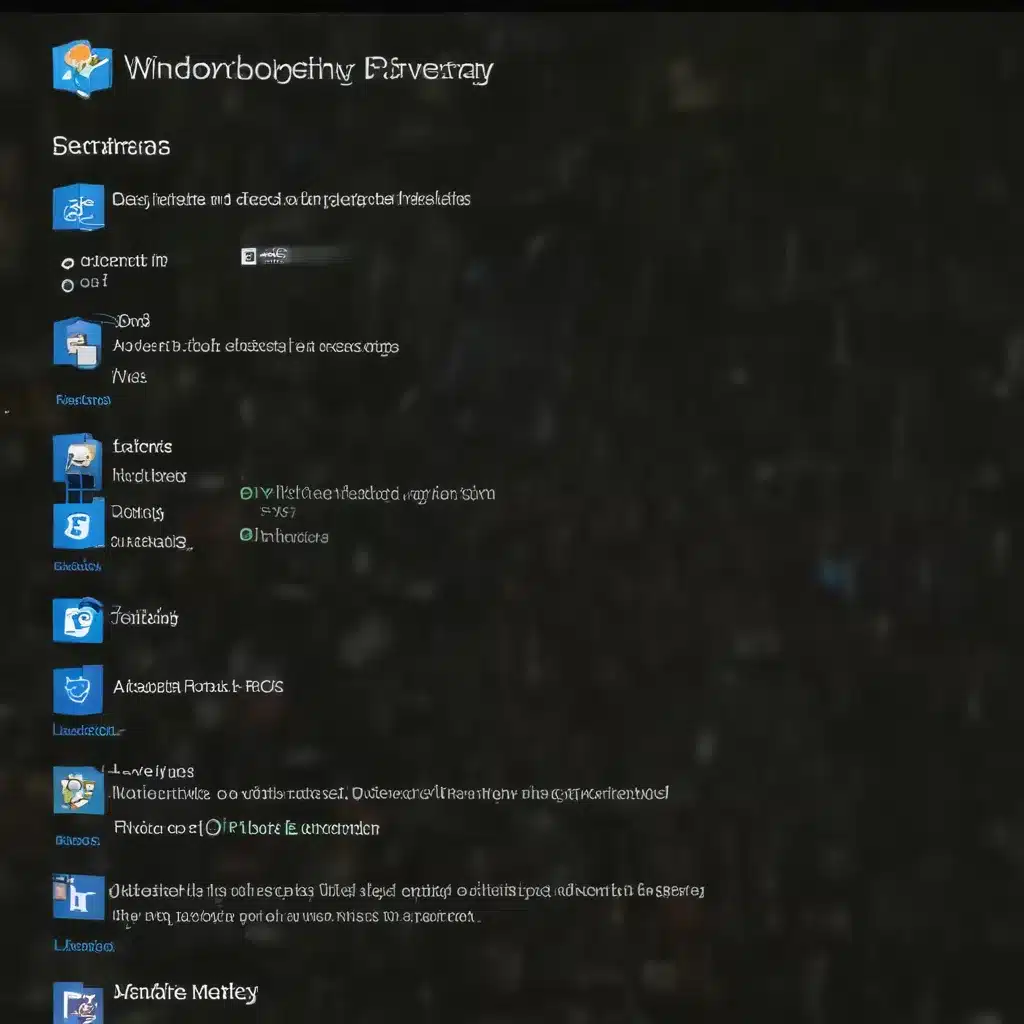Oops, I Did It Again: Recovering from Accidental File Deletion
Have you ever found yourself in that sinking feeling moment when you realize you’ve accidentally deleted an important file on your Windows 10 PC? You know, the kind of file you need for that big presentation tomorrow or the family photos you’ve been meaning to back up for ages. Well, my friend, you’re not alone. I’ve been there, done that, and let me tell you – it’s not a pretty sight.
But fear not! Today, I’m here to share my hard-earned wisdom and guide you through the process of recovering those lost files, so you can get back to being the digital superhero you were born to be. Whether it’s a work document, a cherished family memory, or that one TikTok video you just had to save, we’re going to figure this out together.
Retracing Your Steps: Checking the Recycle Bin
The first port of call when trying to recover deleted files is the Recycle Bin. It’s like the lost and found of the digital world, and it’s where Windows stashes all those files you’ve accidentally sent to the great bit bucket in the sky. [1] So, the very first thing you should do is open up the Recycle Bin and see if your file is in there, waiting to be rescued.
If you’re lucky, you’ll find your file alive and well, just waiting for you to restore it. All you need to do is right-click on the file, select “Restore,” and voila! It’ll be back where it belongs, ready to save the day. [2] But, of course, life isn’t always that simple, is it?
When the Recycle Bin Fails: Exploring Windows’ Built-in Recovery Tools
If your file isn’t in the Recycle Bin, don’t panic just yet. Windows 10 has a few built-in tools that can help you recover permanently deleted files. [3] The first one is the File History feature, which creates regular backups of your important files. If you’ve got this enabled, you may be able to find an earlier version of your file and restore it.
Another option is to use the Windows Search feature to look for the file. [4] Sometimes, even if a file is permanently deleted, it might still show up in the search results, and you can restore it from there. And if all else fails, you can try the good old “Disk Cleanup” tool to see if it can find any traces of your missing file. [5]
When the Windows Tools Fall Short: Turning to Third-Party Recovery Software
But what if the Windows tools just can’t seem to find your file? Well, my friend, this is where the real adventure begins. There’s a whole world of third-party data recovery software out there, just waiting to be your digital knight in shining armor. [6]
Now, I know what you’re thinking – “But won’t that cost me an arm and a leg?” Well, not necessarily. There are plenty of free and low-cost options out there that can work wonders. Programs like Recuva, EaseUS Data Recovery Wizard, and Stellar Data Recovery are all worth checking out. [7]
These tools work by scanning your hard drive for any traces of your deleted file, and then, with a bit of digital wizardry, they can often recover it for you. It’s like a high-tech version of digging through the couch cushions, but without the dust bunnies.
Preventing Future Heartbreak: Best Practices for Safeguarding Your Files
Of course, the best way to avoid the heartache of accidentally deleted files is to take some preventive measures. [8] First and foremost, make sure you’re regularly backing up your important data. There are tons of easy-to-use cloud storage options out there, like Google Drive, OneDrive, and Dropbox, that can help you keep your files safe and secure.
And when it comes to deleting files, be mindful of what you’re doing. Double-check before you hit that delete button, and if you’re ever unsure, err on the side of caution. After all, it’s a whole lot easier to recover a file than it is to try and recreate it from scratch.
So, there you have it, my friend. The ultimate guide to recovering those precious files you’ve accidentally deleted. With a little bit of persistence, some Windows know-how, and maybe a dash of third-party magic, you’ll be back on track in no time. And who knows, you might even learn a thing or two along the way. Happy recovering!
[1] Microsoft. (n.d.). Recover lost or deleted files. Microsoft Support. https://support.microsoft.com/en-us/windows/recover-lost-or-deleted-files-7bf065bf-f1ea-0a78-c1cf-7dcf51cc8bfc
[2] Microsoft. (n.d.). Recover permanently deleted files on Windows 10. Microsoft Tech Community. https://techcommunity.microsoft.com/t5/windows-10/how-to-recover-permanently-deleted-files-on-windows-10/td-p/4074560
[3] Microsoft. (n.d.). Recover lost files on Windows 10. Microsoft Support. https://support.microsoft.com/en-us/windows/recover-lost-files-on-windows-10-61f5b28a-f5b8-3cc2-0f8e-a63cb4e1d4c4
[4] Microsoft. (n.d.). Ctrl+Z in Explorer didn’t undo it – deleted and I can’t find the file. Microsoft Answers. https://answers.microsoft.com/en-us/windows/forum/all/ctrl-z-in-explorer-didnt-undo-it-deleted-and-i/b664e96a-5ebf-4964-9474-51e565f29d10
[5] Microsoft. (n.d.). How to recover files lost by Ctrl+Z. Microsoft Answers. https://answers.microsoft.com/en-us/windows/forum/all/how-to-recover-files-lost-by-ctrlz/74e7e588-e27d-4e04-8eda-5876ced6adaf
[6] Microsoft. (n.d.). Restore deleted files after resetting Windows 10. Microsoft Answers. https://answers.microsoft.com/en-us/windows/forum/all/restore-deleted-files-after-resetting-windows-10/cdb14615-13a0-4548-aef3-3f0178d1a1e6
[7] Stack Overflow. (2017). Restore a deleted file in the Visual Studio Code recycle bin. Stack Overflow. https://stackoverflow.com/questions/41265844/restore-a-deleted-file-in-the-visual-studio-code-recycle-bin
[8] Apple Developer Forums. (2024). How to recover permanently deleted files on Windows 10. Apple Developer Forums. https://forums.developer.apple.com/forums/thread/48830













